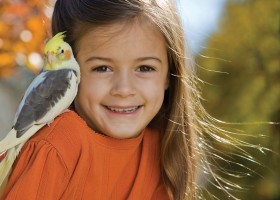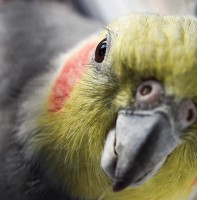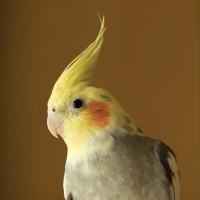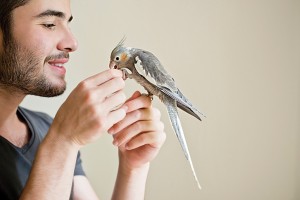A Cockatiel as a pet bird
This was first published as part of a series of articles by Les Rance in the Parrot Society magazine of May 2017.

The cockatiel makes an ideal first pet parrot for families
The Cockatiel (Nymphicus hollandicus) is found throughout its native Australia with the exception of the humid coastal areas of the east, north and south. This testifies to the versatility and adaptability of this hardy little parrot species. They have been kept in the UK for very many years, being one of the first species brought back from Australia in the early days of settlement of that continent, and have proved to be an excellent bird to maintain and breed. Like the budgerigar, this long-term captive breeding has both produced a number of colour mutations, and produced what may be considered as a domesticated species, unlike most other parrots. They are familiar pet birds, with their perky behaviour and distinctive crest feathers. They are relatively easy to keep in a cage provided you are prepared to allow them out of the cage for regular flying exercise around the house, just make sure that all the windows and external doors are firmly closed!! Young cockatiels that are around ten weeks old are easy to train. Allow them time to get used to their new cage. Initially when you place a new bird into a cage scatter seed on the floor of the cage so that they can easily find a source of food, also place a small water bowl on the floor, making sure it is not placed directly below a perch to avoid it becoming fouled with droppings. In the past I have seen young cockatiels become very distressed, being unable to find the food or water in the containers provided with the cage, especially if these containers are partially hooded. This is an important consideration and should not be overlooked.


Their inquisitive nature and distinctive crest feathers make them very appealing
Once the young bird is well settled into its new home open the cage door and slowly move your hand towards the feet of the bird, it might move away but equally it may stand its ground. If it does, then slowly stroke the feathers of the lower breast using an outstretched finger, this may well encourage the bird to step up onto the finger. It can take a few attempts to achieve the desired response, but once you are successful you are well on the way to taming the bird. Always say the words 'step up' as you perform the action. Parrot species are ‘flock birds’ and naturally keen to bond with humans just as they would with other parrots and we can use this desire when we attempt to tame and train them. Initially just spend a couple of minutes on the training, you must remember that if you are kind and move slowly the bird will respond positively to your advances. If the bird shows any distrust to your moves just come away and try again in an hour’s time. Short training sessions are definitely the way forward, never chase the bird around the cage. Once the bird is ‘stepping up’ in the cage you can then move forward with the training. I like to slowly move the bird out of the cage and place it on a perch on the top of the cage. This seems to work well as the bird is still close to the familiar territory of the cage and after around five minutes I reverse the move by getting it to ‘step up’ and slowly moving it back inside the cage. I never clip the wings of young birds as this can affect them psychologically, and if a bird cannot fly it cannot build up the chest muscles that are used for flight.

Young birds may be taught to step up on to a finger
Always remember that slow movements are necessary to build confidence in your Cockatiel when you train them and also initially keep the training sessions to just a few minutes duration. Cockatiels are intelligent birds and they have the ability to learn a large number of words and nursery rhymes which will impress your visitors!
Ensure that you provide a cage as large as you can for these birds and supply a few pet toys. Not too many, as the bird will wish to flap their wings whilst holding on to their perch and on occasions I have seen far too many toys in a cage, which make this near to impossible for the bird. I like to rotate my toys so they are not all in the cage at the same time. Just be careful if you decide to remove your bird’s favourite toy as they may sulk. If this happens simply replace it and the sulk should disappear. Cockatiels as pets are relatively hard to upset and therefore they make good pets. I think they are ideal for the first time pet bird enthusiast and help to give you confidence if you wish to move on to larger pet parrots that are generally more intelligent and consequently more demanding in terms of their housing, feeding and training. Larger parrots are also more damaging to the fabric of your house if they are left unattended when out of the cage. Cockatiels generally are less destructive. When it comes to evening time remember that most birds require 12 hours of sleep each day if you are late going to bed each evening it might be sensible to cover your bird around 8.00 pm each night so as not to over exert your pet.
Hopefully these notes will help you to take the first steps in caring for these delightful, characterful, little parrots.

